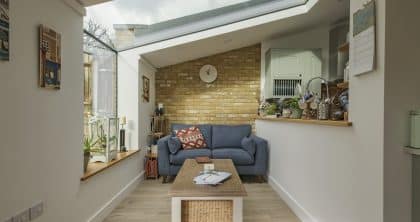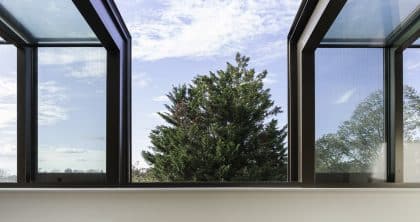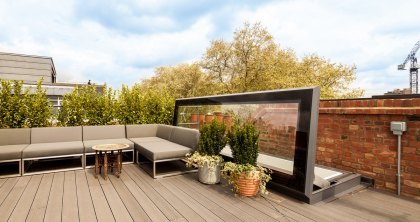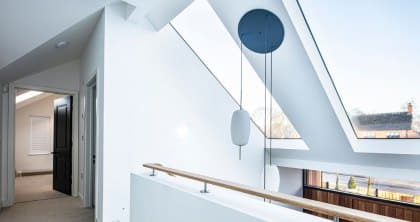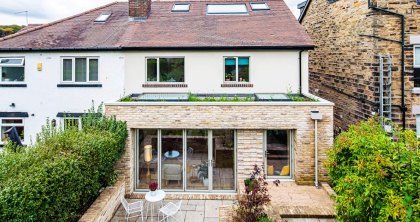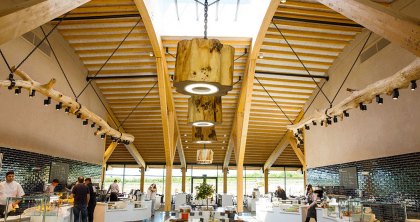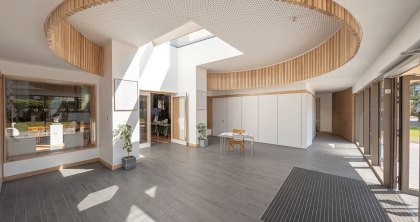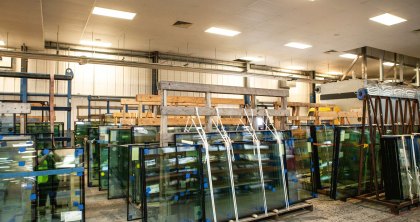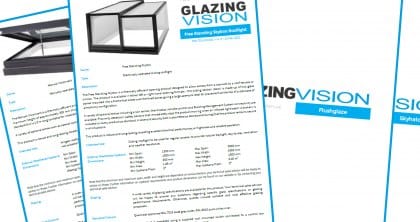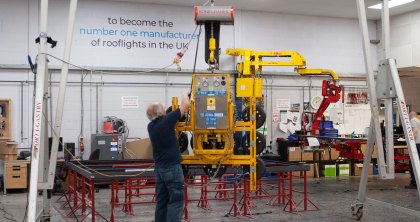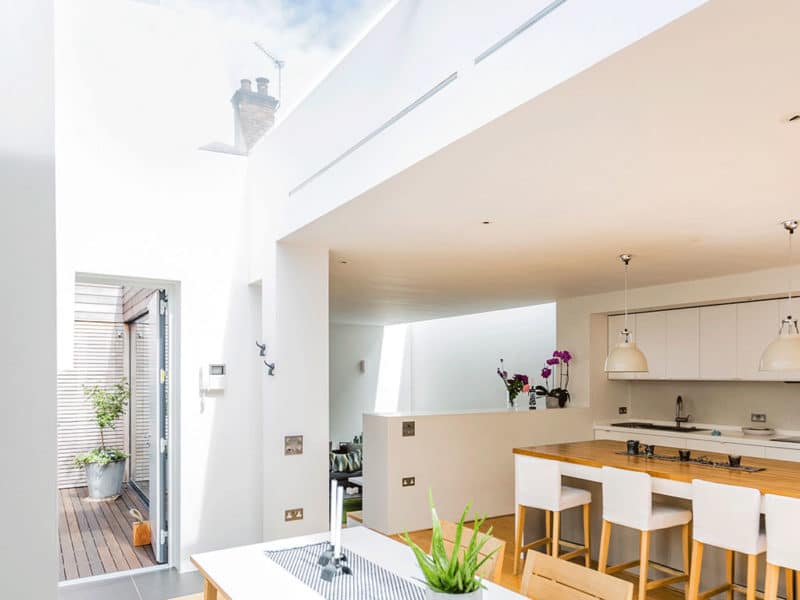Posted on November 28, 2023 in Blog, News, Sustainability, Technical
The 2025 Future Homes Standard will mean healthier homes. This is good news – but why wait – Rooflights can support healthier home specification today.
Part O of the Building Regulations in England sets out requirements for overheating. It was a new part of the Building Regulations in 2021 and will be intrinsic to the overarching Future Homes Standard due to be introduced in 2025. Wales and Scotland have their own overheating requirements, albeit the overall aims across the different countries are similar.
Limiting the potential for dwellings to overheat is particularly critical as the climate continues to warm. Overheating is not just a comfort issue; it is a health issue and must be addressed as the likelihood of summer heatwaves continues to increase. Rooflights have a role to play in overheating control, especially as the use of mechanical cooling is restricted.
What are the requirements of Part O 2021?
There is a single requirement to Part O, which states unwanted solar gains should be limited in summer and there should be an adequate means to remove heat from the dwelling. There are two ways to assess overheating risk in dwellings: a simplified approach and dynamic thermal modelling.
- The simplified approach is generally sufficient for individual homes. It sets maximum limits on glazing areas to prevent excessive solar gains. It also sets minimum limits on ventilation free areas, with the aim of ensuring excess heat is removed via ventilation.
- Dynamic thermal modelling is carried out in accordance with CIBSE TM59 and is more accurate than the simplified approach. It sets comfort criteria by accounting for various parameters that affect internal temperatures, such as weather data, thermal mass, orientation of the dwelling, occupancy and internal heat gains.
Approved Document O makes clear that its purpose is to protect the health and welfare of people within the dwelling. It does not guarantee their comfort.
How can rooflights help to achieve Part O compliance?
Record-breaking heatwaves in recent years have focused attention on overheating, giving it the same kind of prominence as the effect of cold weather on people’s health. The need to consider our changing climate is leading some planning authorities to ask for overheating to be assessed not just on current weather data, but also weather projections for 2050 and 2080.
Dwellings must be able to demonstrate passive cooling strategies that meet the comfort criteria for these predicted future conditions. That is likely to mean increased specification of solar control features on glazing, combined with external shading devices. However, it also expands the role that rooflights can play in helping to achieve comfortable dwellings for the future.
Orientation of the building is obviously critical to the likelihood of overheating. East-facing elevations get the morning sun, while south- and west-facing elevations are exposed to the hottest times of day. North-facing elevations, meanwhile, receive no direct sunlight.
There is likely to be greater scope for individual dwellings to be designed to maximise the benefits of different orientations, and minimise the drawbacks. That depends on having a relatively unrestricted plot, and little other surrounding development to dictate where and how the dwelling must be positioned.
Apartments are often very restricted, sometimes having only a single aspect. Depending on the design of the building overall, larger and more luxurious apartments located at the top of the building might offer multiple aspects. However, the need to accommodate more than one apartment at that level puts limitations on maximising orientation, with each apartment requiring a unique solution based on its different aspects.
For both individual dwellings and apartments, specifying rooflights as well as facade glazing increases the options available for controlling solar gains and reducing overheating risk, while still providing high levels of daylight.
Since warm air rises, opening rooflights are the most effective way of losing excess heat in conjunction with opening windows to allow fresh replacement air into the building.
Positioning rooflights on the opposite side of windows in a dwelling or apartment can help to achieve effective cross ventilation. As well as contributing to fresh air provision, cross ventilation is a passive cooling technique that has long been a feature in hot and humid climates.
As we come to terms with living in a warming climate, cross ventilation will be an increasingly important tool for maintaining the health and wellbeing of building occupants.
Using rooflights to go beyond the minimum standard of Part O
Like all areas of building regulations, Part O only sets out a minimum standard. The option to go beyond the requirements is always available and can be easily justified in this case – we have already seen that Part O doesn’t seek to achieve comfort for the occupants of a dwelling.
A frequent criticism of regulations is that requirements in one area don’t necessarily complement the requirements in another area. The typical example is how energy performance requirements have improved, without ventilation requirements improving to the same level. Changes to the regulations are only just beginning to overcome this disconnect, hence the introduction of Part O.
Designers and specifiers of prestigious homes and high-end apartments don’t have to wait for the regulations to be completely holistic. They can deliver a joined-up approach now to benefit their clients and add value to their projects.
The blank canvas of a new project offers the opportunity to go beyond minimum standards. Project teams now routinely look to the forthcoming Future Homes Standard, and factor in predicted future climate conditions, to benchmark performance now.
Rooflights can provide homes with a level and quality of daylight that vertical windows alone struggle to achieve. Perhaps more importantly, they have a significant role to play in helping to mitigate overheating risk, at a time when the regulatory requirement for such mitigation is not fully mature.
About Glazing Vision
With greater focus on sustainability, rooflights must deliver both energy efficiency and options for ventilation to support overall energy performance and address health and comfort issues like overheating. That is true whether choosing from an existing range or having bespoke items created to fit a particular architectural vision.
We can help projects to exceed the requirements of current building regulations, looking towards the Future Homes Standard. Our expert technical support helps you to meet daylight, ventilation and access requirements. We provide all the details required for correct specification, including U-values and CAD drawings.
For further advice and guidance on how Glazing Vision architectural rooflights can help to future-proof your project by going beyond current building regulations, download our ‘Homes of tomorrow today’ white paper or contact us.

